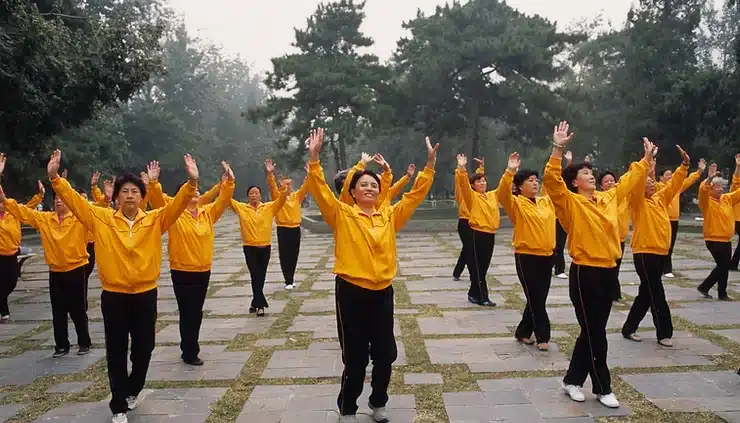Confessions of a Former Smoker
Yes, I am a former smoker. Cigarettes, that is. When I quit smoking, 21 years ago, I started moving more, engaging in more physical activities. I have heard that the best time to work out is the morning however we all have different energy time preferences and regardless of when you work out or move your body the time of day doesn’t really matter. What does matter is that you MOVE!
I am just curious. What does your morning routine look like? I have always been a morning person. I typically get up at 5 am and most days I go to the gym in the morning. To do that I plan the night before. I go to bed early, I lay out my gym clothes, I have the coffee machine ready, and I like to have at least 30 minutes to do my am routine, enjoy a cup of coffee, go through some emails, and then head out the door.
In this article, we are going to focus on a component that you can add to your professional and leadership tool belt and that is prioritizing movement and physical activity into your day.
So, on a scale of 1- 10, how aware are you of the impact that movement has on your physical and mental fitness as a professional and a leader? 10 being highly aware and 1 being unaware of the impact of the movement.
John F Kennedy said, “Physical fitness is not only one of the most important keys to a healthy body but also the basis of dynamic and creative intellectual activity.”
I think we all know intellectually that regular physical activity can improve our overall health and prevent negative health outcomes for people of all ages. Yet, so many of us just don’t do it.
The CDC’s US Department of Health and Human Services conducted a National Health Survey in August 2022 and it “showed that health benefits occur with at least 150 minutes a week of moderate-intensity aerobic activity and that both aerobic and muscle strengthening activities are beneficial.”
150 minutes a week – so that is 2 and half hours a week in time and preferably doing both aerobic and muscle strengthening activities.
I am curious – since that is the recommended amount – where do you land? How many minutes of physical activity do you do a week and is it both aerobic and muscle strengthening or how would you define your activity? And there is no judgment here.
The CDC also found that “24.2% of adults aged 18 and over met the guidelines for both aerobic and muscle strengthening activities.”
That means that 75.8% of adults ages 18+ do not.
The survey also indicated, “The % of adults who met both guidelines were higher amongst men (28.3%) than women at the rate of (20.4%) and decreased with age for both men and women.”
Another interesting statistic was that among men, “Hispanic men, were least likely to meet both guidelines and while non-Hispanic white women were most likely to meet both guidelines.”
Any impressions or thoughts about these statistics?
Additionally, there has been a lot of research into the impact and risks of sitting too much.
Dr. Laskowski, who has a subspecialty certification in sports medicine, is a fellow of the American College of Sports Medicine, is co-director of the Mayo Clinic Sports Medicine Center, and a professor at the College of Medicine, Mayo Clinic, reviews issues arising from sitting too much.
He shares that research has “linked sitting for long periods of time with the number of health concerns, including obesity, increased blood pressure, high blood sugar, excess body fat and unhealthy cholesterol levels.”
Extended sitting such as behind a desk, behind the wheel, or in front of a screen can be harmful.
I am curious, how long on any given day are you sitting for extended periods of time?
Dr. Laskowski also indicated that “researchers analyzed 13 studies of sitting time and activity levels. They found that those who sat for more than 8 hours a day with no physical activity had a risk of dying like that posed by obesity and smoking.”
“However, 60-75 minutes a day of moderately intense activity countered the effects of too much sitting.”
Okay so even if you do sit throughout the day, you can counteract that by MOVING!!
Now, how does this relate to our mental fitness? Well, clearly the research indicates that lack of movement, and living sedentary lives will negatively affect our physical health. What does that do to our mental health and fitness? Here are some of the impacts:
· Higher levels of stress. When we are not moving, we are not releasing stress through movement and so it sits and lives in our bodies.
· Often our food habits and choices can be poor.
· We may have a generalized feeling of apathy, a lack of care for things and
· Our sleep can be impacted.
The other thing is that if we are not moving, we may not feel good about ourselves. We may feel worse, or our negative emotions may intensify and amplify.
So, what can we do? Here are some recommendations to inject physical activity into your day:
-
If you work at a desk, sit behind a wheel, or are on a screen – take a break every 30 minutes – go take a 5–10-minute walk. Walk up and down the stairs, walk outside, do something, and move your body.
-
Stand while talking on the phone or watching tv.
-
If you work at a desk, try a standing desk.
-
Walk with colleagues for meetings rather than sitting in a room.
Movement – even leisurely movement can have a huge positive impact.






